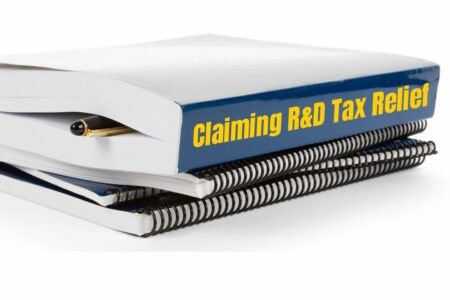Who can notify HMRC of a potential R&D claim?
To complete the prenotification form you should be either a representative of the company, such as the Finance Director or MD, or an agent acting on behalf of the company. The form is digital and can be submitted using a Government Gateway ID.
Once you’ve submitted the form, you’ll receive a receipt from HMRC with a reference number which you will need should you need to contact HMRC about the submission.
You won’t receive a copy of the form itself, so make sure you save your own copy before you submit.
When do you need to notify HMRC about a potential R&D claim?
The rules around when to prenotify are a little confusing. There are certain conditions which will exempt your client from having to prenotify. There’s also a specific deadline related to their accounting period.
Based on HMRC’s guidance we have produced a handy calculator to help determine if prenotification is required.
The basic rules of prenotification
For those of you who like to delve into the detail, our free course An Advisor’s Essential Guide to the Merged R&D Scheme gives a full explanation of all the rules of prenotification.
Please note that our calculator does NOT apply HMRC’s exemption rules for long periods of account. Please contact us if you have multiple accounting periods within a long period of account.
Why is it important to know when you need to prenotify?
If your client does not notify HMRC of a prospective claim by the deadline, their R&D claim will be automatically rejected. There is no flexibility for extenuating circumstances such as illness or anything else. So, if you make a mistake with the deadline, or the exemption period, your client will lose out on their entire R&D tax relief claim.
We’ve heard some R&D advisers saying they will prenotify HMRC of every potential claim, regardless of whether they need to. This means they won’t accidentally miss out on a claim for a client, but it does potentially mean a lot of unnecessary work!
To complete the form, you need to gather the following information:
- the Company’s UTR (Unique Taxpayer Reference)
- contact details of the senior officer at the Company responsible for the R&D claim
- agent(s) contact details
- accounting period dates
- summary of planned R&D activities to show the project meets the standard definition of R&D.
Depending on your clients and processes, this is not a minor undertaking. This is especially true for the summary of R&D activity.
Based on what we’ve seen and heard from HMRC, they plan to use these summaries and other information from the form to flag up claims which could potentially be non-compliant. That means you need to take as much care with the summary as you would with any part of the claim itself. If you submit a hurried summary, you may be opening your client up to an enquiry that they would have avoided otherwise. This is a real own-goal if you were only filling in the prenotification form ‘just in case!’
What to do after prenotification?
Once you’ve sent in the prenotification (or safely determined you don’t need to) you can then continue your claims process. Your next touchpoint with HMRC will be to complete the Additional Information Form before you submit or amend the CT600.





